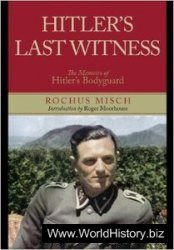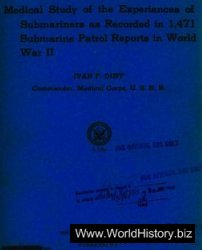Although European-American popular culture varied from region to region and group to group, it is possible to venture a few generalizations concerning entertainment, holidays, and beliefs. Work and leisure were not as easily divided in the revolutionary and early national periods as it is today. European Americans celebrated fewer holidays than their contemporaries in Europe, and their belief system was an odd mixture of the sacred and the secular.
The boundary between work time and personal time remained ambiguous for revolutionary European Americans. It was assumed that everyone would labor from sunrise to sundown. Work hours were often punctuated with breaks to drink beer or other alcohol. Most workers thought little of taking time off in the day to visit a dram shop, watch a parade or procession, or simply to congregate with friends. Every day was not a series of long interruptions, but life had a more fluid character with less concern for the clock.
The tavern remained a central community institution, where neighbors gathered to exchange pleasantries and information. Taverns also offered entertainment, including Music, dancing, and even forms of stage production. Theaters became increasingly popular, producing plays as well as featuring songs and short skits. Gambling was rampant. People bought lottery tickets, played cards and dice, and betted on a wide variety of objects. Blood sports like cock fighting were popular. Horse racing was not just limited to gentlemen. Even city cartmen were known for gathering at the edge of town to race their steeds. Men also wrestled and fought with one another. Sometimes they did so as a test of strength, and sometimes it was the result of a quarrel. Men also often prided themselves with their rowdy behavior, disrupting bars and theaters, and harassing people on the street.
There was also more regular and less disruptive entertainment. In the countryside people gathered for corn husk-ings and barn raisings, activities that have since become the very image of the bucolic ideal of a world we have lost. People in both urban and rural areas joined voluntary associations in droves. Some of these organizations were aimed at reform or the betterment of society. Others merely provided a vehicle for people of similar interests or backgrounds to meet together. There were moral, library, tea, ethnic, journeymen, and religious societies, and a host of others.
Print culture became increasing significant in the period. The revolutionary movement and the politics of the early 1790s depended heavily on the growing number of printing presses and newspapers to agitate and garner support. Beyond politics, with a European-American population that had a high degree of literacy, there was a great demand for a wide variety of printed material. Much of this reading matter was in the form of chap books or broadsheets that might be sold by a street hawker or traveling salesman. These publications might include the confessions of a notorious criminal or pirate at the gallows. Such stories would combine lurid personal detail to pique the interest of the reader, and a safe religious message on the dire consequences of a life of crime. Sensational novels like Susanna Rowson’s Charlotte, a Tale of Truth (1791) became best sellers. Religious works also continued to be popular.
European Americans did not celebrate many holidays; the religious calendar was almost devoid of any special day. Camp meetings offered an opportunity for people to gather in a holiday atmosphere to worship their God. The Sabbath was held sacred and was not a day for work. Those who attended religious services looked eagerly toward Sundays as a time to worship God and meet with friends. Sabbath breaking, however, occurred, as some people viewed Sundays as their day to do with what they pleased—often staying in a tavern all day or misbehaving in public. But beyond the weekly routine, the religious calender did not have a great deal of meaning before 1815. Most European Americans took almost no note at all of Easter, and New Englanders did not celebrate Christmas. For European Americans elsewhere, Christmas and New Year’s marked more of a season of carnival to drink in public and behave disorderly. Christmas as a family holiday did not begin to emerge until after 1815. New Englanders, and some others, commemorated the harvest with a special day for thanksgiving, usually in early December.
Political holidays played a larger role in the popular culture than religious celebrations. Throughout the period elections were days when men came together to vote and to drink. During the colonial period, the king’s birthday, the arrival of a new governor, and Guy Fawkes Day were all observed with much hoopla and treating. The experience of the resistance movement (1764-75) and the Revolutionary War (1775-83) led to the replacement of these days with a different set of festivities. Bostonians, for example, commemorated the anniversary of the “massacre” of its citizens on March 5, 1770 (see also Boston Massacre), and during the 1780s, New Yorkers observed Evacuation Day (November 25, 1783), marking the day when the British finally left the city. In the 1790s the Democratic-Republican Party took delight in holidays connected to the French Revolution (1789-99), much to the chagrin of the Federalist Party. Two special days quickly emerged that nearly everyone in the United States could agree upon: the Fourth of July and George Washington’s birthday. But even these celebrations became more partisan in the 1790s and early 1800s.
Perhaps the most difficult part of popular culture to understand is the belief system. European Americans in the revolutionary and early national period were overwhelming Protestant Christians. But this did not mean that they were also not superstitious. In fact, belief in white magic and witchcraft still existed, as attested by the number of horseshoes over doors and a Philadelphia mob attack in 1787 on a woman accused of being a witch. Popular belief held to the sanctity of a corpse. Rumors that medical students were paying grave robbers for cadavers in 1787 led to a riot in New York and an attack on the medical school.
On the more secular side, common folk had their own ideas about the meaning of the American Revolution. When the founding fathers had met in the Constitutional Convention they had hoped to create a balanced government that would filter out the immediate influence of the electorate. But the Revolution had awakened

Engraving showing the last British troops leaving New York. New Yorkers began to observe Evacuation Day (November 25, 1783) as a holiday. (Library of Congress)
A popular faith in democracy and a concern with equality that could not be stifled. Rejecting any suggestion of hierarchy, many people rallied to the Democratic-Republican Party because it promised to reverse the elitist policies of the Federalist Party. In short, we owe the egalitarian meaning of the American Revolution to developments in popular culture.
See also cities and urban life; journalism; population trends; religion; RIoTs; RuRAL LIFE.
Further reading: Paul A. Gilje, The Road to Mobocracy: Popular Disorder in New York City, 1763-1834 (Chapel Hill: University of North Carolina Press, 1987); Jack Larkin, The Reshaping of Everyday Life, 1790-1830 (New York: Harper & Row, 1988); Simon P. Newman, Parades and the Politics of the Street: Festive Culture in the Early American Republic (Philadelphia: University of Pennsylvania Press, 1997); Stephen Nissenbaum, The Battle for Christmas (New York: Knopf, 1996); David Waldstreicher, In the Midst of Perpetual Fetes: The Making of American
Nationalism, 1776-1820 (Chapel Hill: University of North Carolina Press, 1997).




 World History
World History









